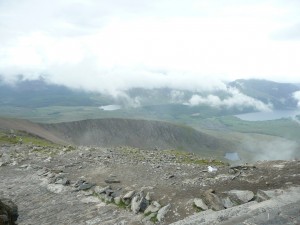 Snowdon is the tallest mountain in Wales, standing at 1,085m above sea level. Thousands of visitors reach the peak each year to reward themselves with panoramic views across the beautiful Snowdonia National Park.
Snowdon is the tallest mountain in Wales, standing at 1,085m above sea level. Thousands of visitors reach the peak each year to reward themselves with panoramic views across the beautiful Snowdonia National Park.
If you’re looking to skip the train journey to the summit and take on the challenge on foot, it’s likely you’ll need to do a bit of planning beforehand. It takes on average between 4-5 hours to ascend and descend the mountain, at a steady pace.
There are plenty of Snowdonia hotels close to the varying starting points of the Snowdon trek. Before heading off, it’s essential that you’ve been well rested the night before.
Choosing to stay in a hotel or B&B close to your starting point means you won’t have to spend half the morning trying to walk or catch public transport to the start of the trek.
 If you do need to catch public transport or perhaps drive to a starting point, the Black Boy Inn in Caernarfon is a fantastic place to stop which offers comfortable accommodation and a hearty breakfast to get you prepared for the day ahead.
If you do need to catch public transport or perhaps drive to a starting point, the Black Boy Inn in Caernarfon is a fantastic place to stop which offers comfortable accommodation and a hearty breakfast to get you prepared for the day ahead.
Once you’re fuelled and ready, there’s a main road from Caernarfon which leads to the Snowdon starting points (including the popular but most challenging Watkin Path), and a bus service which takes less than an hour.
If you’ll be walking up Snowdon during the autumn and winter months, you should always check for the time in which the sun sets. This allows you to allot enough time to yourself to descend the mountain, before it gets too dark.
 Always check the weather. Hourly weather reports are essential for mountain trekking, as Wales doesn’t have a great track record when it comes to stable weather.
Always check the weather. Hourly weather reports are essential for mountain trekking, as Wales doesn’t have a great track record when it comes to stable weather.
What might look like a crisp sunny day can soon turn on its head in no time, so it’s also beneficial to take two types of mountain equipment along with you, including a waterproof jacket.
As the paths up Snowdon are very well-walked on, it’s unlikely that you’ll get lost along the way. But it’s always good practice to take along a map, or GPS device. Some GPS devices allow you to send out a signal to emergency services informing them of your location, which is beneficial in areas where you cannot pick up mobile phone signal.
 This may seem obvious, but don’t try to climb the mountain with improper footwear on. Trainers, whilst comfortable and flexible will not provide the same level of grip as walking boots.
This may seem obvious, but don’t try to climb the mountain with improper footwear on. Trainers, whilst comfortable and flexible will not provide the same level of grip as walking boots.
When walking up the mountain, take it at your own pace. Try not to compare yourself and compete with others going at a high pace, it will likely stop you from enjoying the trek, and you could wear yourself out before reaching the summit. Providing you’ve left plenty of time for sunset, there’s no rush to reach the top.
Always bring enough food and water for the journey, but don’t overload yourself as it will make the climb much harder. Energy bars are a great way to keep you active and you can eat them on the go.

